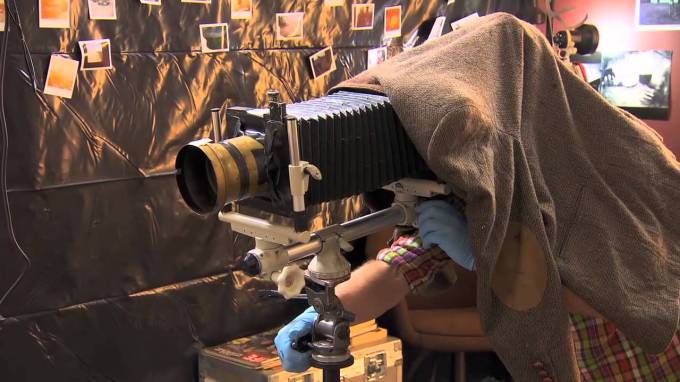Last Updated on 10/20/2014 by Chris Gampat
If you know anything about wet plate collodion photography, it’s probably that the photographer needs their subject to be very, very still for the entire duration of the photo. For most subjects, that isn’t too much of a problem, but Wet Plate photographer Giles Clement had a bit of a more animated subject in front of his lens. Ashley Schafher came into Giles’ studio to have her portrait taken of her and her dog. To ensure that the dog didn’t get too frightened, Mr. Clement decided to use strobes but make as quick and painless of a process as possible. If Giles didn’t use strobes, this means that he would have needed to do a long exposure. The reason for this is because a wet plate has such a low ISO value and such a large area to get into focus that they need an extremely narrow F stop and a very long exposure time.
Through the entire shoot, Giles talks us through the process. It begins with using a piece of black glass and pouring collodion on it–which is a solution of cotton, alcohol ether and acid. Then he adds silver nitrate to make it all light sensitive.
Giles did things like making sure that they were on the same plane of focus to make the job easier for him. In the end, he nails it. The video and the insight into his work are after the jump.


